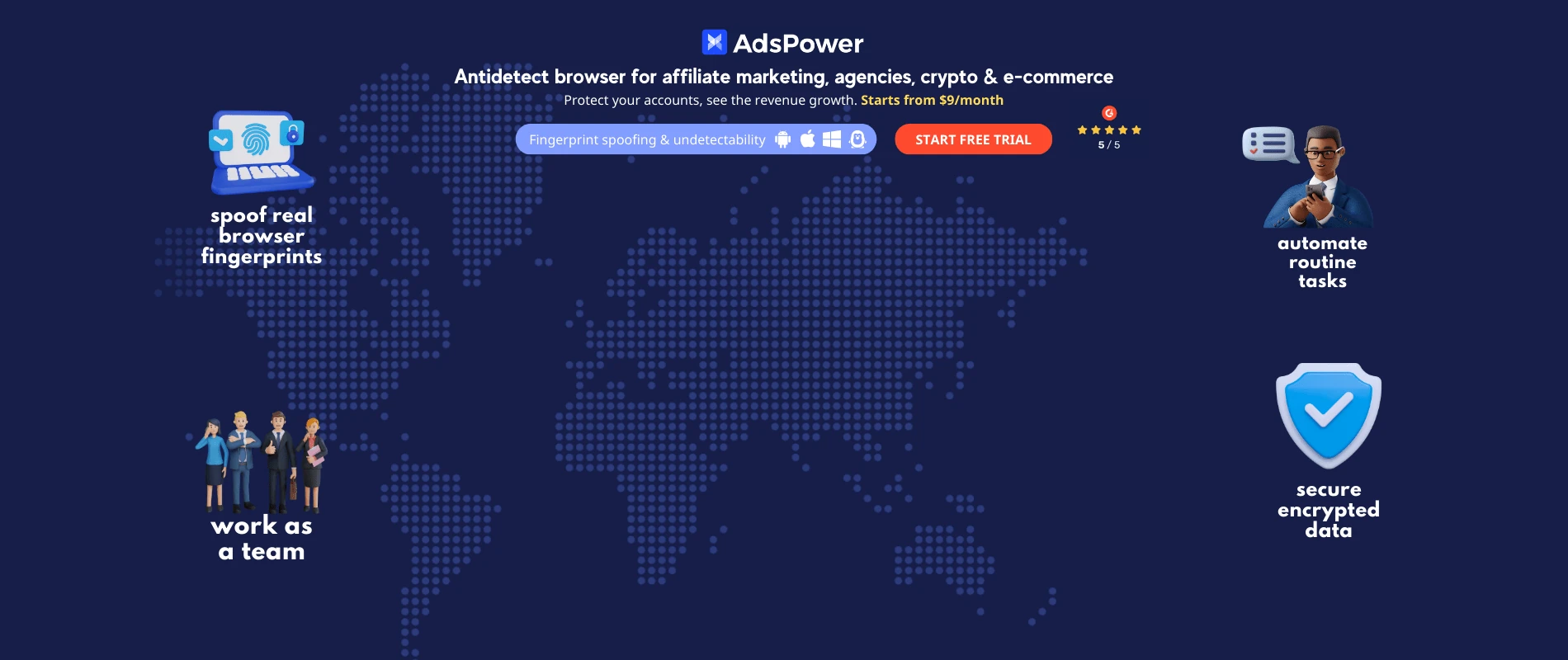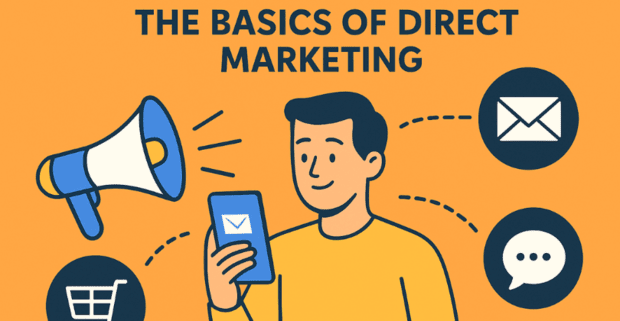It’s important to align direct marketing with broader brand building strategies to maintain a consistent brand image and positioning across all marketing channels.
Direct marketing campaigns use both direct marketing channels and direct channels like direct mail, email marketing and mobile marketing to communicate directly with customers. The goal of direct marketing is to get an immediate response from potential customers, to increase customer engagement and build brand loyalty. Social media marketing which uses platforms like TikTok, Facebook and Instagram is also a way to reach audiences and support direct marketing. But with the rise of call blocking technology, traditional telemarketing has become less effective and marketers are looking for alternative channels to communicate directly.
What is Direct Marketing
Direct marketing is a form of marketing that involves direct communication with potential customers, bypassing intermediaries like mass media and encompasses various types of direct marketing. It’s a targeted approach that delivers personalized messages to a specific audience to get an immediate response. Direct marketing can be done through various channels like direct mail, email marketing, mobile marketing and social media marketing. By using direct marketing businesses can build a direct connection with their target audience, increase brand loyalty and drive sales.
Direct marketing means communicating directly with potential customers through phone calls, text messages and email marketing. This approach allows businesses to talk directly to their target audience, creating a personal and one on one communication experience, often using their phone number. Direct marketers use customer data to create targeted marketing campaigns that resonate with their audience, increasing the chance of getting leads and conversions.The key to a successful direct marketing campaign is to have customer data, in compliance with the telephone consumer protection act so businesses can create personalized messages that speak to their target audience’s needs and interests. By using search engine optimization (SEO) businesses can also increase their online visibility and reach a wider audience. Social media platforms like Facebook and Twitter can also be used to execute direct marketing campaigns, so businesses can talk directly to their target audience and build brand loyalty.
Direct selling is another form of direct marketing where businesses sell products or services directly to customers, in person or online. This approach allows businesses to build a direct connection with their customers, creating a personal and one on one experience. By using direct selling businesses can increase customer engagement, drive sales, generating leads and build a loyal customer base.
Besides direct selling, businesses can also use other forms of direct marketing like direct mail and email marketing to reach their target audience. Direct mail is sending personalized marketing materials to customers through the post, email marketing is sending targeted emails to customers. Both of these approaches allow businesses to talk directly to their target audience, creating a personal and one on one experience.
Mobile marketing is another form of direct marketing where businesses send targeted messages to customers through their mobile devices. This approach allows businesses to reach their target audience on the go, including through popular social media platforms creating a personal and one on one experience. By using mobile marketing businesses can increase customer engagement, drive sales and build a loyal customer base.
Overall direct marketing is a powerful tool that allows businesses to talk directly to their target audience, including through print advertising creating a personal and one on one experience. By using various channels like direct mail, email marketing, mobile marketing and social media marketing businesses can increase customer engagement, drive sales and build a loyal customer base. Whether it’s through direct selling, direct mail or email marketing, direct marketing is a way to reach a specific audience and achieve marketing goals.
Target Audience
Understanding your target audience, including existing customers and prospective customers , is key to a successful direct marketing campaign. Direct marketing can also reach a broad audience quickly and effectively. Direct marketers use customer data to create personalized messages and target specific audiences. The target audience can be identified through demographic information, browsing history and purchasing behaviour. Accurate customer data is essential for a successful direct marketing campaign. And understanding the market as a whole is important before you launch any direct marketing campaign as it helps you identify opportunities and tailor your strategy to meet customer needs.
Direct Marketing Channels
Direct marketing channels are direct mail, email marketing, mobile marketing and direct response marketing. These channels, including company websites, allow you to communicate directly with your target audience, providing personalized outreach that can lead to higher engagement and conversions. Digital coupons can be placed on your website so customers can access discounts online.
Each channel has its own benefits and can reach a specific audience. For example direct mail is great for older demographics who prefer physical marketing materials, while mobile marketing is ideal for younger, tech savvy audiences through mobile apps and text messages. Mobile banner ads, along with a toll free phone number, are part of a comprehensive advertising strategy to reach customers through their mobile devices.
Direct mail is a traditional form of direct marketing where you send printed materials to potential customers. Despite the digital age, direct mail is still a powerful tool for direct advertising as it provides a tangible connection with the audience. Flyers, postcards and coupons can be sent physically through mail or digitally through email to grab attention and drive an immediate response from the recipient.
Email marketing is a cost effective way to reach a large audience and can be used to send personalized messages. You can segment your audience based on their interests and behaviour so promotional emails are relevant and timely. Email marketing can be tracked so you can see open rates, click through rates and conversion metrics, showcasing the importance of direct marketing in marketing. And email marketing is a form of direct response marketing because it’s cost effective and easy to implement.
Direct Response Marketing
Direct response marketing is a type of direct marketing that gets an immediate response from customers, enhancing overall marketing efforts.
It creates a sense of urgency and gets customers to take action, allowing brands to speak directly to their audience.
Direct response marketing eliminates intermediaries, customers have to contact the seller directly to buy.
Direct response marketing can be used through various channels like TV, radio and online advertising, showcasing the versatility of this marketing approach. Direct response TV (DRTV) includes both long-form infomercials and short-form commercials that ask for immediate response.
Each customer response in direct response marketing is measurable and can be attributed to individual ads, so marketers can measure their campaigns. Knowing and measuring preferred response channels like phone, email and direct mail is key to refining marketing strategies and achieving desired sales results, allowing marketers to receive immediate feedback.
The goal of direct response marketing is to get conversions and sales.
Accurate Customer Data
Accurate customer data is key to creating effective direct marketing campaigns. And to follow the rules and standards that govern direct marketing for, ethical and transparent communication to customers. Direct marketers use customer data to create personalized messages and target specific audiences.
Customer data can be collected from social media, phone calls and online forms. Accurate customer data reduces waste and makes direct marketing campaigns more effective. Direct response advertising often includes direct messages and calls to action through QR codes, toll-free numbers or specific tracking mechanisms to measure engagement and effectiveness.
Creating a Direct Marketing Campaign
Creating a direct marketing campaign involves steps like identifying the target audience, selecting the direct marketing channels and creating personalized messages. Including direct marketing as part of a broader marketing strategy can make a big difference in reaching your target audience. Direct marketers use marketing strategies like segmentation, targeting and positioning to create effective campaigns. The goal of a direct marketing campaign is to get engagement and conversions. A well planned direct marketing campaign can increase brand loyalty and customer retention.
Cost-Effective Direct Marketing
Direct marketing can be a cost-effective way to reach a large audience.
Direct marketers use cost-effective channels such as email marketing and mobile marketing to reach potential customers.
Cost-effective direct marketing involves using accurate customer data to create personalized messages and target specific audiences.
SMS marketing, which involves sending promotional text messages to customers, is another cost-effective channel that can drive engagement and conversions. The advantages of using short message service (SMS) marketing include its interactive nature and the cost-effectiveness of delivering messages instantly.
Direct marketing can be an extremely cost effective way to reach a targeted audience compared to traditional advertising methods.
The goal of cost-effective direct marketing is to maximize returns on investment.
Digital Marketing and Direct Marketing
Digital marketing and direct marketing are closely related and can be used together to create effective campaigns. Direct interaction allows brands to create personalized experiences that enhance engagement and drive conversions, contrasting with traditional mass marketing methods that rely on third parties.
Digital marketing channels such as social media platforms and online advertising can be used to support direct marketing campaigns. The use of digital technology in direct response marketing allows for rapid direct interaction and fulfillment processes, enhancing the efficiency of campaigns. Direct marketers use digital marketing channels to reach a broader audience and drive engagement. The goal of digital marketing and direct marketing is to create a seamless customer experience.
Conversational Marketing
Conversational marketing is a type of direct marketing that involves using chatbots and other technologies to engage with potential customers.
Conversational marketing is a powerful tool for building brand loyalty and customer retention.
It involves creating personalized messages and using direct marketing channels such as email marketing and mobile marketing. Brands can also utilize direct messages to engage with users, address specific queries, and foster a direct connection with potential customers.
Kiosk marketing, which involves selling products and services through machines in crowded settings, is another innovative approach to direct marketing.
The goal of conversational marketing is to create a direct connection with potential customers.
Direct Marketing Strategies
Direct marketing strategies involve using various tactics such as segmentation, targeting, and positioning to create effective campaigns. An overview of various types of direct marketing commonly used in contemporary advertising includes direct mail, telemarketing, email marketing, and social media marketing. Direct marketers use marketing strategies such as direct response marketing and conversational marketing to drive engagement and conversions. The goal of direct marketing strategies is to maximize returns on investment and increase brand loyalty. Effective direct marketing strategies involve using accurate customer data and personalized messages.
Measuring Direct Marketing
Measuring direct marketing means tracking key metrics like response rates, conversion rates and return on investment. Finding and targeting the right customers is key to communicating offers and building relationships and therefore sales and customer loyalty. Direct marketers use metrics like click through rates and open rates to measure email campaigns. Measuring direct marketing means finding areas to improve and optimise campaigns. Measuring direct marketing means maximising returns and building brand loyalty.
Budgeting for Direct Marketing
Budgeting for direct marketing means allocating resources to channels and tactics. Direct marketers use budgeting strategies like cost per acquisition and return on investment to allocate resources. While digital is more popular, print can still be effective for certain demographics like older consumers in certain neighbourhoods where printed materials like brochures and catalogues can drive sales. Budgeting for direct marketing means maximising returns and building brand loyalty. Budgeting for direct marketing means using accurate customer data and personalised messages.
Involving the Consumer
Involving the consumer is key to successful direct marketing. Personalised communication that makes the customer feel valued is crucial in this process. Direct marketers use opt-in and opt-out to involve the consumer in the marketing process. The goal is to create a direct connection and build brand loyalty. Involving the consumer means higher customer retention and engagement.
Common Direct Marketing Blunders
-
Common direct marketing mistakes include using wrong customer data, not personalising messages and not tracking key performance indicators. These mistakes can lead to poor campaigns and wasted resources and ultimately hinder a direct marketing strategy.
-
Don’t use junk mail and spam to reach your customers. These tactics can damage your brand and reduce customer trust and engagement. Instead focus on creating value driven content that resonates with your audience.
-
Building a marketable database for direct marketing campaigns takes time and effort but is essential for long term success.
-
The goal is to maximise returns on investment and brand loyalty. By learning from these mistakes marketers can refine their strategy so their marketing is efficient and effective.
-
Direct marketing is about using the right customer data and personalised messages. Using data analytics and customer insights allows marketers to tailor their campaigns to the specific needs and wants of their audience. This means a better customer experience and higher conversion rates and long term customer relationships.
-
Also direct marketers should continually test and optimise their campaigns to see what works for their audience. A/B testing for example can give insights into the best messaging, design and call to action.
Future of Direct Marketing
The future of direct marketing and direct advertising will be using artificial intelligence and machine learning to create super personalized messages and target specific audiences. As these technologies advance, direct marketers will be using conversational marketing and direct response marketing to drive customer engagement and conversions. For example, a text to remind a customer about items left in their cart. Practical application of this.
In this landscape the main goal is to create a seamless and enriching customer experience and personal connection and maximize ROI. The future of direct marketing will be about using accurate customer data and delivering messages that resonate with the audience. By using these innovations direct marketers can anticipate customer needs, build brand loyalty and win more in their marketing campaigns.
Direct Marketing Regulation
Direct marketing regulation is following the laws and guidelines like TCPA and telephone number privacy under GDPR. These regulations are to protect consumer privacy and ethical marketing. Consumers are concerned about the privacy of direct marketing so marketers need to prioritize transparency and compliance to build trust and maintain customer relationships.
Direct marketers should use tactics like opt-in and opt-out to get immediate feedback and comply with these regulations. Opt-in is when potential customers have explicitly agreed to receive marketing messages and opt-out is when they can unsubscribe anytime.
The main goal of direct marketing regulation is to protect consumers from unwanted messages and make direct marketing respectful and effective. By following these regulations marketers can build trust with their audience and long term customer relationships.
Effective direct marketing regulation is using accurate customer data and creating messages that align with regulatory requirements. This will not only enhance the customer experience but also maximize marketing efforts. And using a toll-free phone number as a call-to-action in direct response marketing can get immediate consumer engagement and measurable results.
Direct Marketing Ethics
-
Direct marketing ethics means being transparent and honest with potential customers.
-
Don’t use spam and junk mail.
-
Goal of direct marketing ethics is to connect directly with potential customers and build brand loyalty.
-
Direct marketing ethics means using accurate customer data and personalized messages.
Direct Marketing Tools and Software
-
Direct marketing tools and software means using technology such as marketing automation and customer relationship management to send personalized messages to specific audiences. These tools streamline the marketing process so you can manage and execute your campaigns efficiently.
-
Marketers use tools like email marketing software and mobile marketing platforms to reach potential customers. These platforms allow you to segment your audience, automate email sequences and track engagement metrics so the right message gets to the right person at the right time.
-
Goal of direct marketing tools and software is to maximize ROI and build brand loyalty. By using these tools you can gain insights into customer behavior, optimize your marketing and deliver more relevant and timely communications.
-
Effective direct marketing tools and software means using accurate customer data and personalized messages. With access to valuable customer data you can craft campaigns that resonate with your audience and get higher conversion rates and stronger customer relationships.
-
Plus direct marketing software often includes analytics and reporting so you can measure the success of your campaigns and make data driven decisions. By looking at key performance indicators like open rates, click through rates and conversion rates you can refine your strategy and improve campaign performance over time.
-
As technology evolves new direct marketing tools and software are emerging that offer new ways to engage with potential customers. From AI powered chatbots to advanced data analytics platforms these tools give you the ability to deliver personalized experiences at scale and customer satisfaction and business growth.
Direct Marketing Case Studies
Direct marketing case studies provide insights into successful direct marketing campaigns including effective promotional message strategies and best practices and areas for improvement. By looking at these case studies you can learn from others and apply those lessons to your own marketing.
Goal of direct marketing case studies and search engine optimization is to enhance the customer experience and maximize ROI. These case studies show how accurate customer data and personalized messages can be used to create impactful campaigns that resonate with your audience. By looking at direct marketing case studies you can learn more about the strategies and tactics and refine your approach and get better results from your campaigns.
Summary
In summary direct marketing is a way to drive engagement and conversions. Direct marketers use social media marketing, direct response marketing and conversational marketing to create campaigns. Goal of direct marketing is to connect directly with potential customers and build brand loyalty. Effective direct marketing means using accurate customer data and personalized messages that resonate with your audience.




